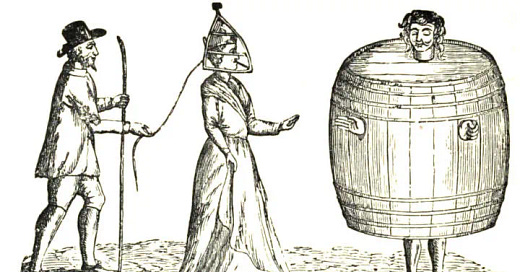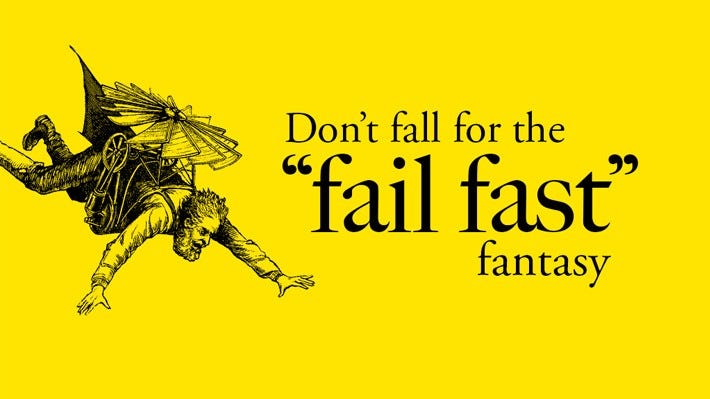The Hidden Benefits of Rigid Rules and Punishments on Creativity
Lessons from Singapore on Making Smarter Groups
Fail to flush a toilet in a public bathroom and expect a possible fine of $500. Tourists that try to sell bubble gum receive fines up to $5,500 and one year in jail. Urinate in an elevator and the consequences are worse. Many elevators are equipped with Urine Detection Devices that respond to scents with a high-frequency alarm and automated door that traps the user inside until a police officer arrives. And when that officer smells those territorial pissings, you are unlikely to get a get of jail free card.
As the 7th safest country in the world, Singapore is serious about quality of life (the United States failed to break the top 50). To be safe, Singapore enforces strict penalties on anyone breaking the rules.
Singaporeans possess a strong sense of security. Sometimes, the law and order element is a touch fanatical — But guess what? Businesses simply hang up a barrier rope indicating closed until tomorrow. No locks. No doors. You don’t worry about robberies or someone spitting near your feet.
Survival on a highway drive relies on the assumption that other travelers stay within the painted lines. Meaningful conversations require some semblance of predictability. If I direct your gaze to a purple sunset and you reply “Frosted Flakes with Elvis”, there’s a failure to communicate.
It just so happens that social norms emphasizing security and safety often unlock creative potential.
Psychological Safety Alone Does Not Lead to Creative Groups
If your gym is packed with patrons who refuse to clean up sweat puddles, walking away from treadmills with shoes that squish and leave footprints, you are going to find the place unappealing. If you find the place unappealing, you are less likely to go and thus less likely to exercise. In the absence of safety, the environment has an undue influence on healthy behavior.
You would think a long list of country-wide rules in Singapore stifle original thinking. I did. Until I unearthed the numbers.
As Singapore racks up some of the lowest crime rates in the world, it also ranks 2nd in producing creative outputs. Singapore provides clear behavioral evidence to citizens: we will ensure you feel safe and secure, now do what really matters.
When a culture removes quality of life concerns, there is more freedom to redirect attention from survival to aspirational goals.
Research by Dr. Carsten De Dreu and colleagues shows that this framework is not limited to Singapore. Two inputs together increase the probability of group creativity. Safety is only a single, albeit large, input. First, you need high levels of what scientists call “epistemic motivation” where people show exceptional interest in gaining and producing knowledge. The more unique a person is, the more promise their unique knowledge offers. Epistemic motivation is about valuing independent thinking, critical thinking, curiosity, creativity, and viewing criticism as a gift instead of taboo. Most groups stop here, content with an open-minded attitude. But if you don’t have a sufficient pool of unique people to draw from, epistemic motivation is like being a blind, voracious reader in a library.
Second, you need high levels of “prosocial motivation” where people care for the group, dedicate effort to protecting and nurturing the group, even at the expense of personal gain. If your group is addressing both of these motivations, you are on the path to high potential.
Easy to say, easy to claim, hard to put into practice.
How are you finding and integrating a diverse set of views into the group? This means recruiting people who think differently, who may not seem like “a cultural fit.”1 If everyone holds the same attitudes, beliefs, configurations of strengths and weaknesses, and converges toward harmony and positivity, then you lack a sufficient pool of cognitive resources to draw upon. Being open to new ideas is of minimal value if members too closely resemble each other.
If you do start to increase the range of individual differences in the group (demographics, personalities, thinking styles, ideologies), you should anticipate that they have disagreements, dissenting positions, and might be uncomfortable going against the numerical majority. What are you doing to bring their minority viewpoints into the fray?
You received feedback about an impending decision that deviated from everyone else. The numbers are on your side for majority rule. What do you do with the minority feedback? How you ignore or address that feedback speaks to epistemic motivation.
The collective has needs that transcend individuals. How is the collective protected from physical safety concerns and social persecution from principled dissent? How is the incentive structure rewarding group results instead the mere antics of individual stars and sloths?
Thinking about how a group fares on epistemic and prosocial motivation, offers a lens for auditing existing group practices. Ask people for their opinions and you might hear a bunch of Yesses as real thoughts go unspoken. Fear drives people into self-silencing mode.
Afraid that others who are smart and seasoned must know better.
Afraid of unjust criticism.
Afraid of being ostracized.
Afraid of repercussions on pay and advancements.
Afraid of slowing group momentum.
Afraid of being misunderstood.
Afraid of being discounted.
Afraid of having ideas stolen.
Humans want opportunities. Access to information. Invitations to be with people who are smart, wise, strong, and socially attractive. If you don’t feel secure and safe, the costs outweigh the benefits of dissenting, disagreeing, or being different. If you recruit for like-minded folks (and nobody is immune to this ideological leaning), then you are unlikely to get sufficient, productive disagreements in the first place. Mediocrity becomes increasingly likely.
In workshops with business executives, I ask – raise your hand high if, over the past month, you encouraged someone to be creative on your team. Almost everyone raises their hand. Quickly. Proudly. Affirmation that creativity is highly valued. It is the setup to the next question– over the past month, how exactly did you respond when someone explored a new approach and failed? The initial enthusiasm disappears. Most of the attendees cast their eyes downward. The silence, the lack of participation, exposes a gap between values and action.
We support creative pursuits when success is certain. Unfortunately, most everything we care deeply about — sports, making someone laugh, catching an ocean wave with a surfboard, telling someone we love them — is barraged by uncertainty. Being anxious and unsure of whether something will work is the cost of a creative enterprise. Team members don’t want monologues to “fail fast, fail early, fail often.” They seek evidence that they are safe and secure. From this firm foundation, people can explore alternatives to the dominant social order.
Know the Game You Want to Play
When other people act in predictable ways, interactions are low maintenance, requiring only as much energy as required for making sense of the situation. Disruptions to predictability add to our emotional and cognitive burden. Extra energy is required to figure out what to say or do next. Misunderstandings increase. Agendas are harder to complete.
When people feel safe, they don’t have to be hyper focused on ease and speed. When deadlines are flexible, reduce inefficiencies and aim for the best solutions not the quickest - whether it is a 12-person jury uncovering truth in a court trial2 or a school determining how to evaluate teacher effectiveness.
Let’s design groups with thoughtfulness about how to encourage curiosity and creativity. From research on self-censorship, we know that the majority of group members refrain from speaking up about their views, even when those views are under discussion. This is not inherently a problem because there is plenty to self-censor in every social interaction.3 But if creativity is a prized outcome, there is much to retain about what Singapore is getting right and what scientists are discovering about group dynamics.
The path to permitting and embracing new voices is a track record that lower-order needs for safety and security will be satisfied. When these new voices are heard and elaborated on, expect fewer cognitive biases, more divergent thinking, and greater creativity.
No self-help book will offer an answer to increasing creativity unless there is acknowledgement of a big, driving influence: safe, opportunity rich environments.
Dr. Todd B. Kashdan is the author of The Art of Insubordination: How to Dissent and Defy Effectively (Avery/Penguin) and a Professor of Psychology who leads The Well-Being Laboratory at George Mason University.
Discover more by following me on socials:
A tome can be written on how this trope is used to reject impressive candidates on paper. You don’t detail in emails that someone has an atrocious personality, political ideology, or that you feel intolerance toward someone who is a racial minority, immigrant, or in need of accommodations for their neurodiversity or physical limitations. People take the easy way out and derive pseudo-bullshit about a lack of cultural fit. I view it as stealing the agency of humans. Human resources assumes they care more about being socially accepted than producing great work. Or that they lack the resilience to handle negative evaluation and rejection. Or that they are unable to figure out over time how to make friends and influence people despite being different.
Here is my plea for not dismissing long articles and books in a world of short attention spans. This is a really, really long read but a great freaking paper if you care about criminal justice reform.
One of the guys working on my kitchen renovation has a series of tattoos on his hands that seem to indicate a gang affiliation. I have so many questions when I see him. But he’s not getting paid to satisfy my curiosity. Thus, unless he initiates, which he hasn’t, I hold back on asking questions. It’s okay. It’s not a tragedy. Neither are many self-censoring moments. We must be precise in conversations around self-censorship. There are useful, problematic, and irrelevant acts of self-censorship. Useful and problematic forms of self-censorship can be broken down into what helps and harms the person, the group, or society. Even this framework is overly simplistic because self-censorship might harm intimacy in a workplace social interaction but be irrelevant to the main goal of working efficiently and effectively. I have no plans on detailing the taxonomy of self-censorship but will definitely welcome someone to create a killer visual.









